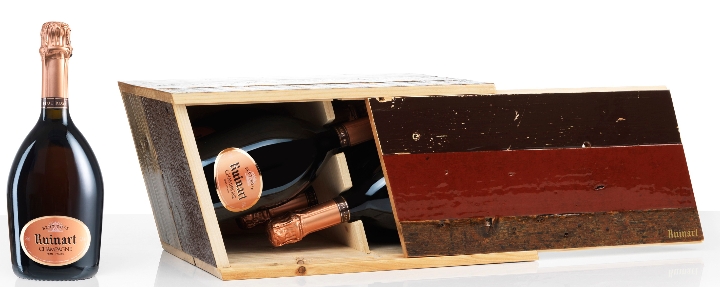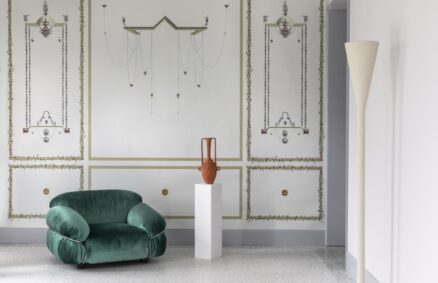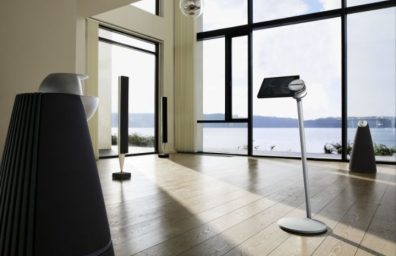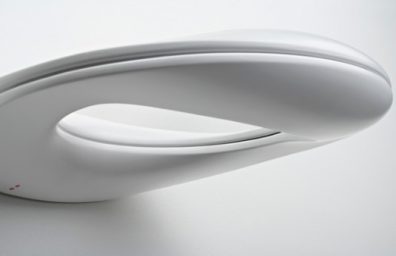Piet Hein Eek has chosen to tell the origins of the Maison Ruinart by creating a case for Champagne Rosé that evokes the original wooden case, that of 1769, filled with the precious bottles of the Maison.
The March 21 1769 the first register of the accounts of the Maison Ruinart brings a novelty among shipments: sending his precious Champagne to Elsinore, Denmark, contained in wooden cases. This packaging method is an absolute innovation, since the sparkling wine from the Champagne lands at the time was shipped in baskets, an imperfect protection, which regularly caused the loss of a certain number of bottles.
It was therefore an uncommon modus operandi. Suddenly, the very value of the product influences the way it is shipped: the resistant wooden crates will protect it from the risks of transport, while consolidating the quality of the commercial relations that bind the Maison Champenoise to its customers.
Dutch artist Piet Hein Eek loves wood. Not the traditional material of the carpenter, nor the solid wood of the sculptor, but the wood already impregnated with a story, the one from which one has looked away a little, forgetting its natural beauty. IS in this wood marked by the patina of time that he has been creating contemporary inlays for over twenty years, in which the past of the material is tinged with a modern dream. Through his collections of chairs, tables, armchairs or chests of drawers, this artist graduated from the prestigious Academy of Eindhoven explores the authenticity of wood while offering unexpected interpretations. Tamed by the hand of the craftsman, the material is assembled, diverted, to leave its primitive condition and open up to a new range of possibilities.
Piet Hein Eek has chosen to tell the origins of the Maison Ruinart. The case he creates for the Maison's Champagne Rosé thus refers to the original wooden case, the one from 1769, filled with its precious bottles. Here, however, the content is symbolically reduced to four bottles, arranged in quincunxes. The historical chest thus seems to have traveled through time. Its traditional right angles are slightly inclined, drawing a lozenge, a parallelepiped in motion, an association of minimalist lines ready to fit together with others. This structure is therefore calculated specifically on the curves of the bottles, which it offers to the eye thanks to a sliding wall.
Combined with each other, overlapping or side by side, these boxes designed by Piet Hein Eek are brought together to create a new object and unique: the "casse-cave" or a "cash-cellar" for Champagne with a contemporary allure, whose shape lends itself to the owner's imagination.
This “casse-cave” is made from the same recycled wood that Piet Hein Eek uses for the creation of his furniture. Patiently collected by the artist, this pine essence has been meticulously chosen for its dark raspberry brown, spicy red and shades of pink, which remind it of the colors of Ruinart Rosé. Lightly sandblasted to ensure softness to the touch, the material is then covered with a thin layer of lacquer, then assembled by hand in the form of interlocking and nailed panels. Signed and numbered individually, each Ruinart Rosé “cellar box” is therefore unique and handcrafted in Piet Hein Eek's ateliers in Geldrop, near Eindhoven.
Ruinart Rosé reveals its greedy and fruity temperament thanks to the intervention of two complementary and harmoniously balanced grape varieties: Chardonnay and Pinot Noir. Their assembly gives life to a pale pink color that turns towards garnet, whose purity is underlined by a lively and persistent effervescence. The first nose evokes the freshness of red fruit, thus giving way to more floral scents, veiled with exotic fruit and spicy notes. On the palate the Ruinart Rosé reveals a velvety mouth, then a more full-bodied but decisive character, in which the echoes of red fruits that the wine lets emerge on the nose, as well as a touch of pink grapefruit dotted with peppermint.
The finesse, freshness and brightness will respond with relevance to dishes that play on sweet-savory combinations, such as the combination of a Manchego cheese and a quince. The delicate fruity aroma will also be combined with finer dishes, such as the meat of a sea bream accompanied by a tomato compote flavored with tonka bean. Finally, its exotic colors will respond with temperament to the lightness of fresh fruit in its simplest presentation, but also to the delicacy of a lychee diplomat scented with rose water.





